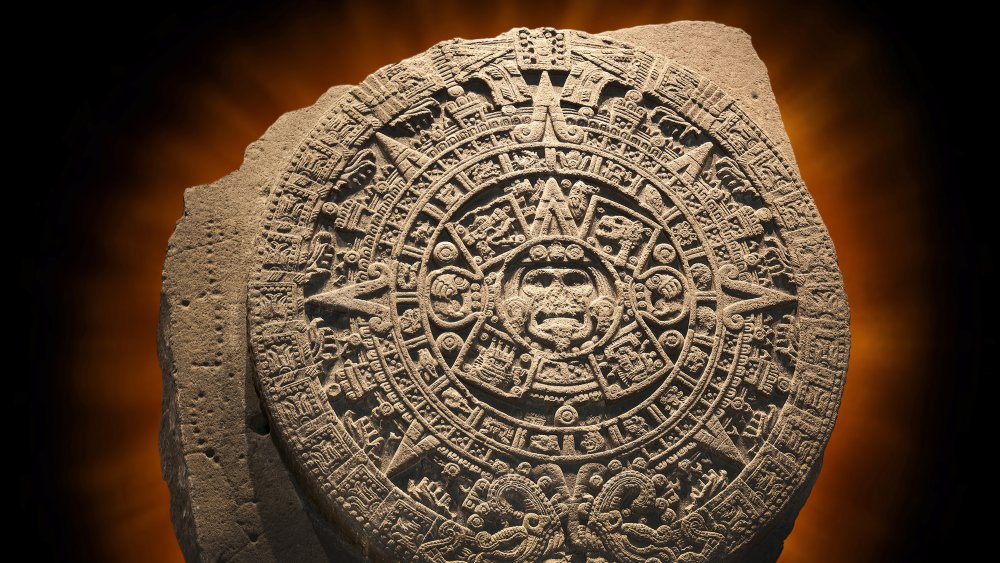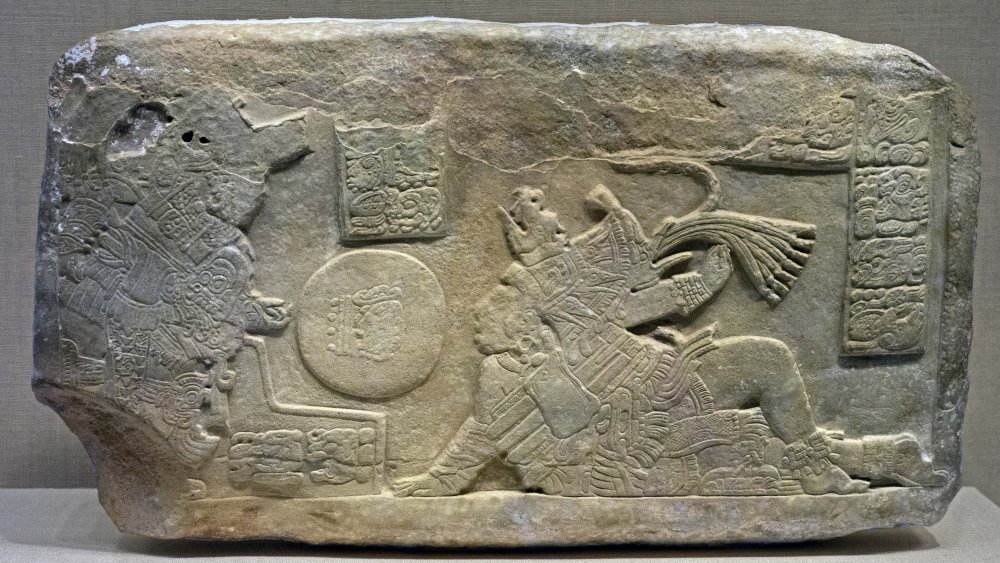Things The Ancient Aztecs Couldn't Live Without
There were at least three items that defined Aztec life. Without them, the Aztecs wouldn't have been who they were. One was endearing. Another had horrifying implications. And the third ... kind of brings everything together and helps put their culture into sharper focus.
But first to set the scene here's some Aztec 101. The Aztecs called themselves the Mexica. Their vast civilization sprawled across much of present-day Mexico from the 14th Century to the 16th Century, before coming to an abrupt end in 1521 by the merciless, steel-wielding hands of the Spanish Conquistadors. There's so much that could be said of these oddly civilized yet brutal people. But to very roughly paint in the broad strokes of their universe (courtesy of Britannica), the Aztecs believed the world was the last and best in a series of older creations. They held that 13 heavens crossed the expanse above them and that 9 underworlds lay beneath their feet. The Aztecs were good at measuring time, undeniably brilliant at careful and resourceful agriculture, and completely clueless when it came to forged metal — of which they had none. Their gods were vindictive, and had an unsettling fixation with blood — but more on that in a moment.
From soup to nuts, the Aztec worldview was complicated, unforgiving, and intricate. But let's get back to these three indispensable things....
The Aztecs loved rubber balls
It's easy to think that a national obsession with a sport is a modern world phenomenon. It isn't. The Aztecs prized athleticism, according to History Crunch, and when they weren't busy waging wars, the people threw themselves into a sport known as ōllamalitzli — which translates to the delightfully literal "rubber to play ball." You probably won't fall from your chair to learn the sport involved a rubber ball. More surprising, though, are the specs. The ball would have been extremely hard by modern sporting standards, likely weighing in at a hefty 10 pounds, and with dimensions slightly less than a soccer ball. Unfortunately, historians haven't been able to recreate the rules of "rubber to play ball," but it likely involved two teams bunting a ball about with their hips, forearms, and thighs. Stopping that thing with body bits probably involved a fair amount of pain.
"Rubber to play ball" likely served two purposes. The game was a major high point on the Aztec social calendar, bringing large groups of spectators together. Historians also think the sport may have acted as a religious metaphor, reminding folks of the endless conflict between the sun, whom they named Huitzilopochtli, and his jealous siblings, the moon and stars. Odd as it sounds, a rubber ball sat right at the center of Aztec culture. It gave Aztecs a recreational touchstone while reminding them of their humble place in an endlessly warring universe.
They needed obsidian...
According to glass historians (now there's a niche specialization) at the Corning Museum of Glass, Aztecs failed to discover metallurgy. Why they missed this vital graduation moment from the Stone Age is partly down to the fact that they had a material that was, in some ways, superior: the black glass, obsidian.
Obsidian served a panoply of pointy purposes in daily Aztec life. The substance was insanely sharp. Sharper than surgical steel (weird sidebar: obsidian is actually still used for some eye surgery) an Aztec obsidian sword was reputed to be sharp enough to behead a horse — an unthinkable feat for even the sharpest of steel swords. Of course, being glass, it was also extremely fragile. Aztec warriors likely needed to replace their blades after a few uses, a bit like a disposable razor.
The extreme sharpness of the versatile black glass also served a darker purpose. As the Aztec History blog explains, human and animal sacrifice was a crucial part of Aztec life. They believed that every person owed a blood-debt to the gods. To appease their bloodthirsty overlords, Aztecs would cut their tongues and ears on ritual occasions, flicking the blood toward the sun or the moon in tribute. How did they bear the constant pain and physical trauma? A fresh obsidian blade is sharp enough to cut effortlessly, causing little pain and a clean wound. Obsidian may have made the constant physical toll of bloodletting easier to bear.
And they lusted for mystery toads and magic mushrooms
According to Live Science, the Aztecs occupied a veritable Disneyland of psychoactive substances. Their natural world was filled with wacky mushrooms, juicy toads, and brain-bending plants, and any of these could set a human brain a-fizz with a rainbow of colors and otherworldly visions. Of mushrooms alone, there are over 50 known psychotropic compounds in this part of the world, including an incredibly potent substance called psilocybin.
The Aztecs knew this substance was unusual, but just how profoundly it interacts with the human brain is still the subject of vigorous experimentation. Right now, the John Hopkins Center for Psychedelic Consciousness Research is investigating how the compound can treat opioid addiction, Alzheimer's disease, PTSD, and a range of depression-related conditions. Researchers are also looking at how psilocybin can help terminally ill patients face the prospect of death. There's no way to comprehend the final terrifying moments of an Aztec sacrificial victim preparing for the blood-soaked embrace of Huitzilopochtli. However, historians think it likely that psilocybin and similar substances were used to make the process ... is the right word easier?
The Aztec's blood-drenched march through history may have had its endearing version of Quidditch and its terrifying uses for surgically sharp glass. But it doesn't feel too much of a leap to imagine that a secret sauce for all that strangeness was the potent psychoactive buffet lying just beyond their civilization's back doorstep.



